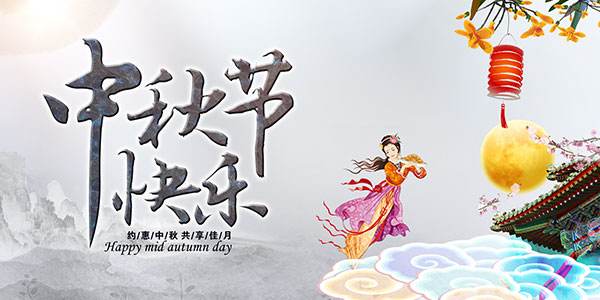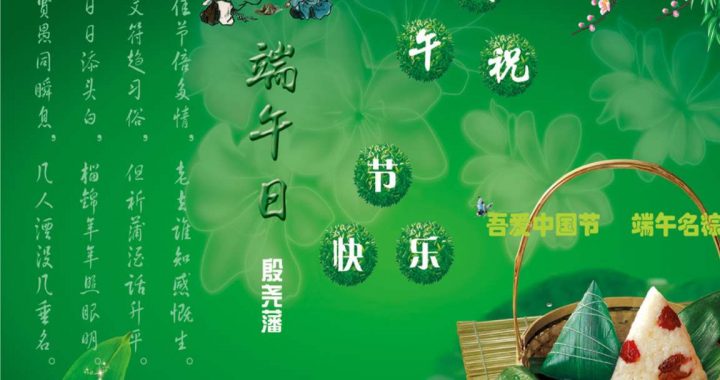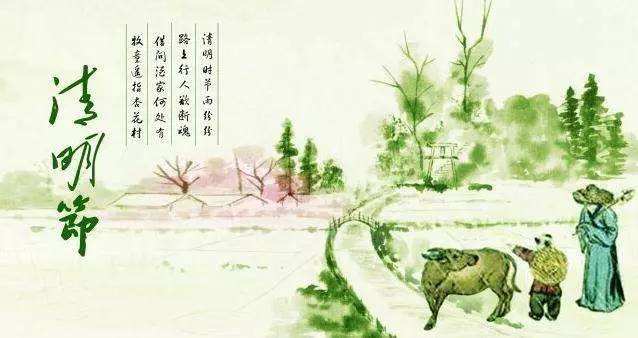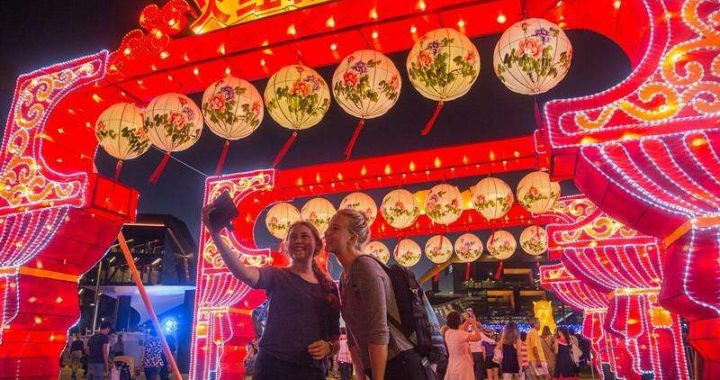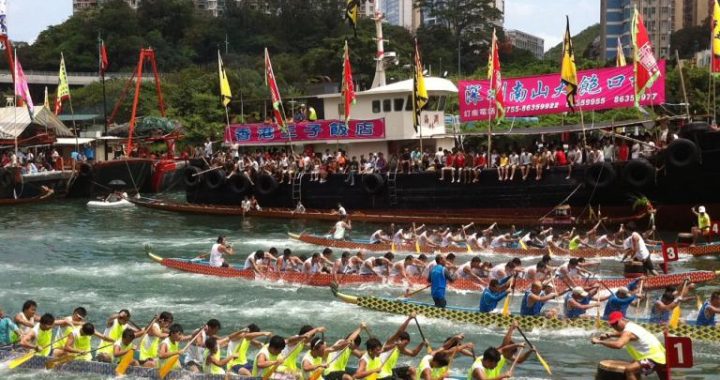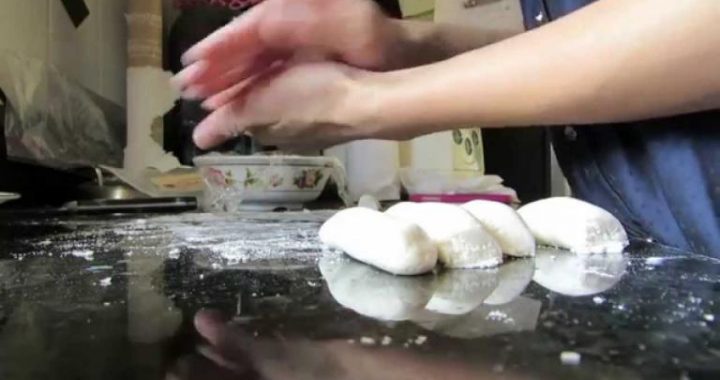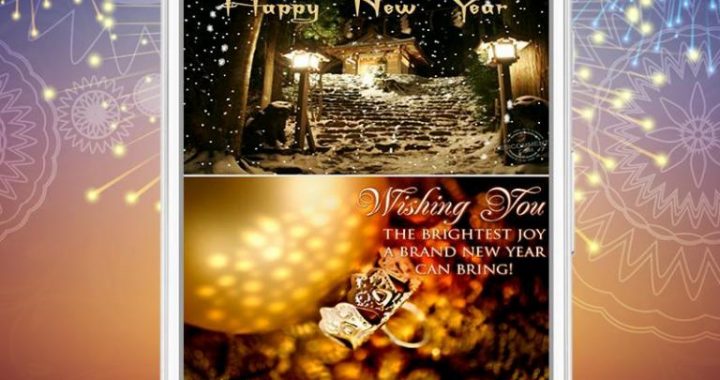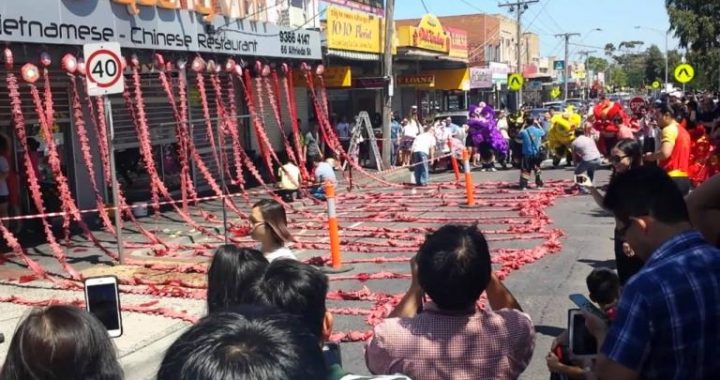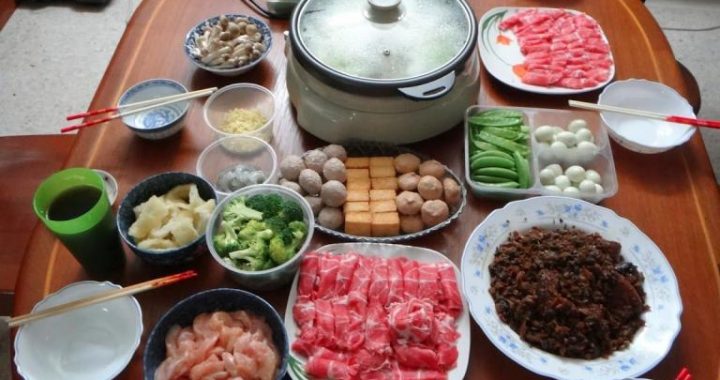The Four Galas:Spring Festival,Qingming,Duanwu and Zhongqiu
16 min readThe Spring Festival,Qingming,Duanwu and Zhongqiu are four most important traditional festivals in China.Not only Han people,but also some minority groups celebrate these festivals.People have enjoyed a long holiday for the Spring Festival,and since January 1st in 2008,the Qingming,Duanwu and Zhongqiu festivals have also become legal holidays in China,which means people may take one day off from work for each of the festivals.The governmental policy reveals the influence of the fourtraditional festivals,which not only convey people’s wish for happiness,retrospection for ancestors and memory of historical elites,but also express their strong desire for family reunion.
1)The Spring Festival The Spring Festival,which had a history of at least
3,000 years,is the grandest traditional festival in China.
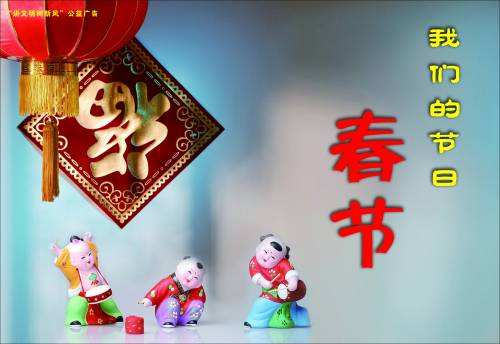
The Spring Festival in traditional sense started from the first day of the first month in the lunar calendar and lasted for at least 3 to 5 days.In a broadened sense,it lasts from the first to the fifteenth day,the Yuanxiao Festival.The first day of the first month in the lunar year was also called Zhengdan, Yuanzheng, Yuanri or Yuandan in ancient China. After the period of the Republic of China, thefestival was called the Spring Festival and Yuandan became the festival for January 1st in the Gregorian calendar. And the new People’s Republic of China continues to use the name of the Spring Festival; hence it becomes the festival for the New Year in the lunar calendar.
Spring Festival is the beginning of a new year.
Ancient Chinese used different ways to count the years before Zhou dynasty. In primitive society,a year was called a”zai”, in Xia dynasty”sui”, in Shang dynasty”si”, and in Zhou dynasty it was started to be called “nian”. Nian originally meant the harvest of crops. As people in Zhoudynasty attached great importance to the development of agriculture, they considered the harvest time as the beginning and ending of the cycle of the four seasons. After the harvest, people would have celebrations and offer sacrifice to deities to thank them for their blessing and pray for another good harvest in the following year. At that time, crops got ripe once a year, so the celebration was once a year, marking the beginning of another year. Therefore, Spring Festival originated from the ancient harvest ceremony. The festival for new year, as set in Zhou dynasty, has become the most important day people are yearning for.
Before Han dynasty, as there were no consistent calendars, the new year was not set on the first day of the first month. In the first year of Taichu period in Han dynasty under Emperor Wudi’s reign (104BC), Zhengyue in lunar calendar was considered as the first month of the year and the first day of the first month was considered as the festival for the new year and the following dynasties just followed suit.
When the new year came, ancient people would celebrate it with such customs as offering sacrifice to deities and worshipping ancestors, doing obeisance to the Paying a New Year Call in Spring Festival elders and greeting each other in the family. After the daybreak, people would also greet neighbors and friends.
Officials would greet each other. At the time, not only folk people should pay new year greeting to each other, the court would also have new year greeting ceremony and all officials would congratulate the emperor for the new year. Even up to now, offering sacrifice to deities and ancestors is an important ritual in the Spring Festival. Along with the development of the telecommunication, new year greetings extend from face to face greeting and sending New Year card to telephone call greeting, text message greeting and greeting through the Internet. When children send their newyear greetings to the elders, the elders would give them Ya Sui Qian (money as a new year gift to pin down the evils) because”Sui”(meaning year) has the same pronunciation as”Sui”(meaning evil spirits). So if the children get Ya Sui Qian they would live through the whole year safely. Another custom of the Spring Festival is to set offfirecrackers. Firecrackers can be traced back to the religious belief in primitive time. People believed that thesound of firecrackers would dispel ghosts and evil spirits.
The custom of setting off firecrackers has lasted for almost 2,000 years. The original form of firecracker was to burn bamboo in the fire. When bamboo sections got heated, itwould dilate and produce sound of explosion, hence the name of”Bao Zhu”(meaning exploding bamboo). In Song dynasty, people began to use Bao Zhu made of gunpowderother than the natural Bao Zhu made of bamboo. In Ming and Qing dynasties, Bao Zhu made of gunpowder becamemore popular. People not only used Bao Zhu to dispel ghosts but also used it to welcome and send off deities as well as guests. In modern times, firecracker playing has become a very important part of the Spring Festival in the countryside. In cities, people are also allowed to set off firecrackers in certain places at a certain time. The sound of firecrackers adds to the festival atmosphere. When the New Year comes, firecrackers are set off all over the country and in the refulgence people welcome the new year.
The abundance of food is another stamp of the Spring Festival.In Wei,Jin and Southern&Northern dynasties,Spring Festival food included pepper and cypress taste wine,peach soup,Tusu wine and five taste plate,which had the function of keeping people healthy and driving away illness or pestilence.In Song dynasty,it was popular for people to eat noodles or other similar food.In Ming and Qing dynasties,people in northern China would eat dumplings and people in the South would eat rice cake.
·Jiaozi(dumplings)
Dumplings and rice cake are the two most typical foods for the Spring Festival.Dumpling is in the shape of Yuan Bao(shoe-shaped gold ingot)and rice cake in Chinese pronunciation is“Nian Gao(meaning higher year by year)”.Both have auspicious meaning.And other food for the festival include meat,vegetables,bean products,fruits,cakes,fried foodstuff,roasted seeds and nuts and candies.
Beverages include alcohol,red wine,fruit juice,milk,carbonic acid drinks and so on.
2) Qingming
Qingming is one of the twenty-four solar terms and also a traditional festival for sweeping tombs and offering sacrifice to ancestors. It is a day between April 4th and 6th in the Gregorian calendar. The Han people and someminority groups do tomb sweeping in the festival.
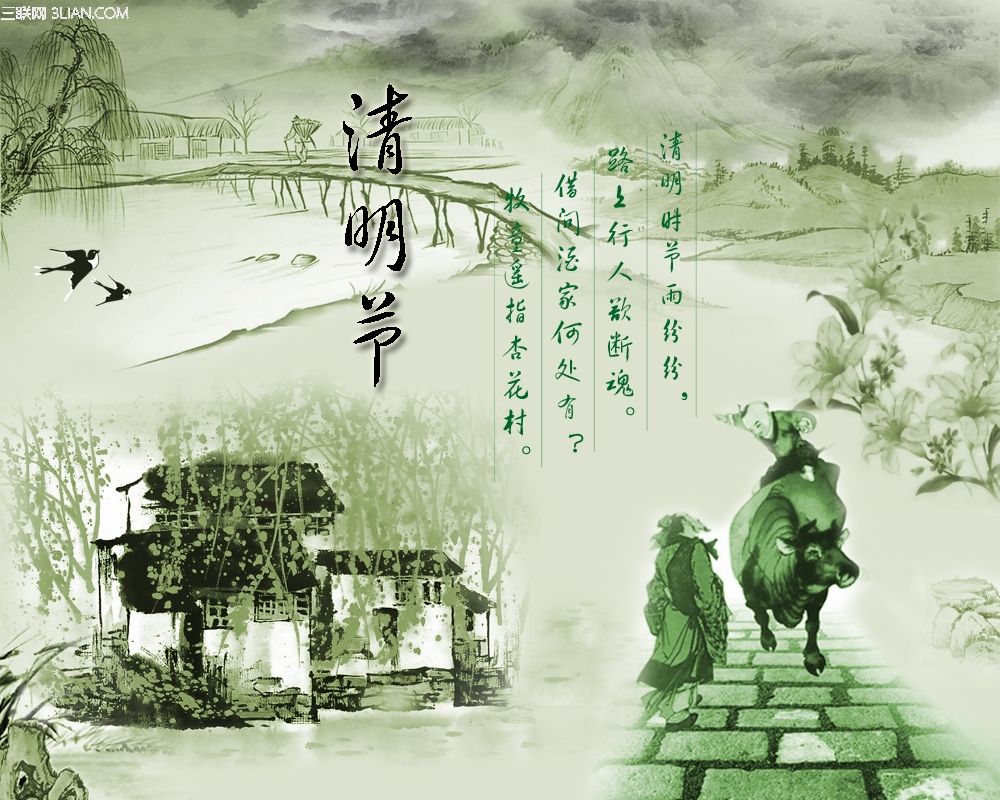
Before Tang dynasty, Qingming was only one of the solar terms, used to clock time and guide the agriculture production. Then it became a festival in Tang dynasty. As the day is very close to the day of Hanshi Festival, they became one festival and gradually formed the customs of forbidding fire, sweeping tomb, interposing willow bough and spring outing.
Hanshi Festival can be dated back to Han dynasty. In Wei, Jin and Southern & Northern dynasties it became a national holiday. The festival was two days before Qingming Festival, or 105 days after the Winter SolsticeDay. Hanshi means to forbid cooking or heating food with fire and to eat cold food. It is said that the festival was in memory of Jie Zitui,a person from the state of Jin in the Spring and Autumn period. Chong’ er, the son of the Dukeof Jin state, went into exile to other states with his followers. When he was hungry without any food available, Jie Zitui, one of his followers, cut flesh from his leg to feed Chong’ er. However, later when Chong’ er got back to his state and became Duke Wen of Jin state, he awarded all his followers except Jie Zitui. Being disappointed, Jie Zitui retreated to a mountain and refused to be an official. But Duke Wen of Jin state ordered to fire the mountain to force Jie Zitui to leave the mountain. However, Jie held a tree and was burned to death, hence the story “Cut flesh in leg andget burned in mountain”left to us. And later people in Jin state started the custom of eating cold food and forbidding fire on the day to mourn for Jie Zitui.
Since Tang dynasty, there were customs of spring outing and offering sacrifice in front of the tombs in Hanshi Festival. In Emperor Xuanzong’s reign, Hanshi Festival became a legal holiday for people to sweep tombs and offer sacrifice to ancestors. After mid-Tang and Song dynasties, the court would have 7 days off for Hanshi and Qingming festivals. People also had outing and tomb-sweepingcustoms in Qingming. After Yuan and Ming dynasties, Hanshi Festival gradually faded from people’s memory and Qingming Festival became a very important festival inspring. At the end of Qing dynasty, other entertainment activities were stopped in the festival and Qingming became a pure Tomb-sweeping Day.
Osier is a symbol of Qingming Festival. To insert osier on the door became a custom in Tang dynasty and prevailed in Song. In Tang dynasty, the emperor would have a grand fire granting ceremony every year to give new kindling to his favored chancellors. It is said that the fire was passed through burning osier and the chancellor who got the granted fire would insert the osier on the door to show the glory. Thereupon, inserting osier was endowed with an auspicious and honorable meaning. While people in the later period also followed such practice, inserting osier gradually became a custom in Qingming. Since Song dynasty, every family would insert osier in front of their doors and vehicles in Qingming, and they would even decorate their hair with osier and entertain themselves by making sound with willow leaves.
Activities in Qingming included spring outing, ball game, tug-of-war, cock fighting, swing playing and kiteflying. When people were flying kite, they would write Picture of kite(Qing dynasty) their names on the kite and when the kite flied high enough, people would cut the pulling wire and let the kite fly away, believing that it could take away bad luck and evil spirit and people would live with good fortune.
People would eat eggs in Qingming. They would dye eggs or draw some pictures onside. The color they used was from madder and after they drew pictures on boiled egg, the color would be invisible until several days later.
The color was Cambridge blue at the beginning, and soon would change to dark blue, purple and red finally. When the shell was knocked off, blue pictures would be seen on the albumen. Besides eggs, people in many places also had Toufou, Spring pancake, Qingtuan (green cake) as Qingtuan(green cakes) Qingming food, or they would make Qingming rice, Qingming wine and Mingqian Tea. Qingtuan is a kind of rice paste made from green vegetables and sticky rice. And Mingqian Tea was tea gathered and made before Qingming Festival.
3) Duanwu
Duanwu Festival was on the fifth day of the fifth month in the lunar calendar. It is an ancient festival with more than two thousand years of history. People at different times and in different places created multicolored customs for the festival. The festival even casts influence on South Korea, DPRK, Japan and Vietnam and has become an international festival.
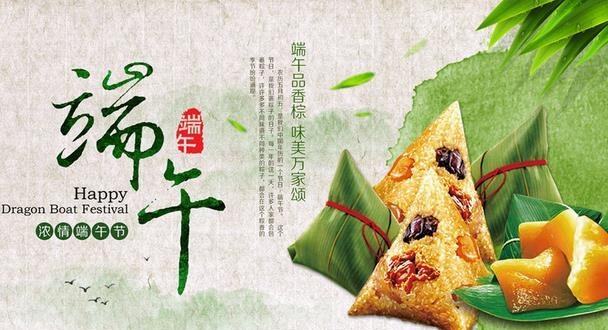
Duanwu Festival can be dated back to the Warring
Duanwu Festival
States period in Chinese history. Ancient people believed that the fifth month was an evil month full of evil influence and harm to all life beings. So in the Warring States period some special customs were formed, for example, refusing to bear baby that would be born in the fifth month, gathering various herbs, washing themselves with orchidhot water and climbing high mountains to play. The four customs had been the origin of Duanwu Festival with its core notion to avoid evil spirit.
Duanwu Festival finalized its design in Wei, Jin and Southern & Northern dynasties. In this period, activities in memory of Qu Yuan and the dragon boat race got involved in the festival. Since then, the two basic themes of Duanwu Festival had been set as to drive away the evil to keep healthy and to memorize Qu Yuan. Although there were minor changes later, no fundamental alteration was made in the celebration of Duanwu Festival.
Argy wormwood, calamus, pictures of five poisonous animal, silk thread in five colors and fragrant purse are the talisman used in Duanwu Festival. Argy wormwood and calamus are herbs used by ancient people to cure disease and keep away the evil. In Jin dynasty, people started to plait the argy wormwood into shape of human and hang it on the fifth day of the fifth month so as to avoid evil spirit. After Song dynasty, people would carve human or calabash figure on the root of calamus and take it with them to shun the evil.
The five poisonous animals are five animals that people thought can do harm to human beings. The members of the five animals at different times and in different places varied.
With the notion of combating poison with poison, people inDuanwu Festival would make use of the picture of the five animals to lustrate evil influence. Silk threads in five colors are the silk adornment people wear around their neck or arms. People in Han dynasty first used the silk threads in five colors to avoid being hurt by weapons or apparition.
Fragrant bag is a bag with medication or flavor which will help to keep away the evil. After Song dynasty, it has become a custom in Duanwu to have all kinds of decoration in the shape of bags.
There are many sacrificing activities in Duanwu festival, including ancestor worship and deities worship.
Emperor Xuanzong of Tang dynasty would offer summer costume and fans to the Temple of Ancestors on the fifth day of the fifth month, which was a typical ancestor worship ritual. The folk would hold the ancestor worship ritual before dinner on Duanwu Festival. People would offer wine, zongzi and other festival food to ancestors and then the whole family would eat them together.The deities being worshipped in Duanwu also varied from imagined deity of Heaven or Immortals,Celestial Master Zhang,thefounder of Five Pecks of Rice,sect of Taoism in Eastern Han dynasty,to Zhong Kui,the deity who is in charge of capturing ghosts.People would also offer sacrifice to the god of plague and hold the ritual to send it away.
In ancient times there were also the customs of gathering herbs and body ablution.People believed that herbs gathered on the festival had the best effect in curing disease.The custom of gathering herbs in Duanwu continued until the Ming and Qing dynasties.The water used in body ablution were usually water boiled with some special plant or herbs like orchid,wormwood,willow leaves,calamus or some other Chinese traditional medicine.
Dragon boat race is the most popular activity in
Dragon boat race
Duanwu. The race was related to the story of Qu Yuan, who was a patriot chancellor in the state of Chu in the Warring States period yet got banished and killed himself by jumping into the Miluo River (in Hunan province today). After he jumped into the river, people in Chu state rushed to save him, hence the race of dragon boat. The custom appeared in Jin dynasty and prevailed in the southern area in Southern & Northern dynasties and Suidynasty. In Tang dynasty, the race was introduced to the north, although it has been always more popular in southern area with more rivers than in northern areas.
Besides the dragon boat race, there were also activities like shooting the willow leaves, ball games and grass competition. In grass competition, the name of the grass or flowers, tenacity of grass and variety of the grass could all be competed. In Chapter 62 of A Dream of Red Mansions,”Xiangling Competing Grass”, the name of the grass and flower were competed, Xiangling, Xue Pan’s concubine and several maids each gathered some grass and flowers and amused themselves in competing the name of the grass they got. One said she had Avalokiteshvara Willow, the other said she had Arhat Pine. Then when Douguan said she had Sister Flower, all girls were stumped. Finally Xiangling said she had Spouse Grass.
The typical food in Duanwu are zongzi, cakes with pictures of the five poisonous animals onside, dish madefrom five different raw materials, calamus, and wine with arsenic sulphide. Zongzi was named jiaoshu (millet package with angles) in ancient times. It is said that eating zongzi is also a custom in memory of Qu Yuan. Now in.
Zongzi
almost all places in China, people eat zongzi in Duanwu Festival. In northern China, zongzi is made of sticky rice, bean paste, red date, which tastes sweet. In southern China, there are both zongzi in sweet flavor and in salty flavor with meat stuff inside. Cakes with pictures of the five poisonous animals and the dish made from five different raw materials are not poisonous at all. They just symbolize the five poisonous animals thought to be able to drive away sickness and evil spirits.
The purpose of drinking calamuc wine or wine with arsenic sulphide was also to shun the plague influence.
Calamus wine was a wine with root and leaves of calamus, which could be used as a medicine. In making the wine with arsenic solphide, arsenic solphide was triturated into powders and dissolved in the wine. The notion of usingwine with arsenic solphide to drive away the evil was revealed in the famous Chinese folk story The White Snake. In the story a white snake had transformed into a beautiful lady and married Xu Xian in Hangzhou. When it was Duanwu Festival, she drank the wine with arsenic solphide and suddenly transformed back to a big snake and scared Xu Xian to death.
4) Mid-autumn Day(Zhongqiu)
The fifteenth day of the eighth month in the lunar calendar is Zhongqiu Festival in China. It is a festival for family reunion, just like the Thanksgiving Day in the U.S.
On the day, the moon would be bright and beautiful.
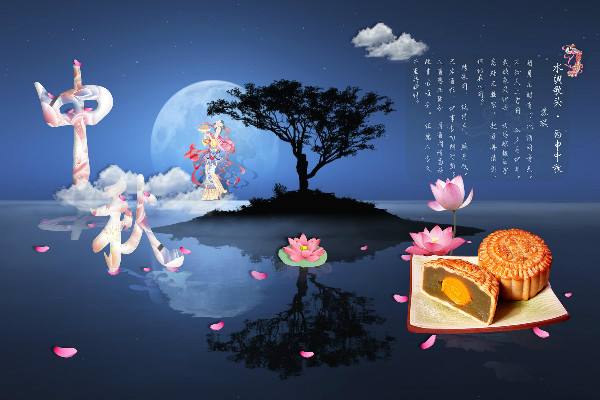
Watching the moon, people would easily think about theirrelatives, their hometown and motherland. No matter where they are, in Zhongqiu Festival, they would have a strongnostalgic feeling for their hometown and their family.
Zhongqiu Festival was first formed in Tang dynasty and thrived in Song dynasty. There are four different origins for the festival. The first origin of the festival was the moon adoration in ancient times. The customs in the festival such as watching the moon, worshipping the moon, eating moon The Moon in the Mid-autumn Day cakes and celebrating reunion are all related to the moon. The second origin is said to be the worshipping of ChangE, Goddess in the moon. The third origin is the activity ofworshipping God of Earth after harvest in autumn. As the Chang’e Flying to the Moon(stone carving in Nanyang, Han dynasty) eighth month in lunar calendar is a season when crops, melons and fruits become ripe and on the Mid-autumn Day people would taste the newly harvested grain, melon and fruit to celebrate the harvest. There is another saying that the Zhongqiu Festival directly originated from the moon-watching fashion in early Tang dynasty; and the forming of the moon-watching fashion was attributed totwo factors: the grandness and roundness of the moon on the day, and the humanistic connotation granted by fairy tales and the moon.
In Mid-autumn Festival in Tang dynasty, people would gather with relatives and friends to have a partytogether, drinking and chatting while watching the moon.
The literates would create poems and share with each other in the light of moon. In Song dynasty, the main custom was still appreciating the beauty of the moon. But the thing different from that of Tang dynasty was that in Tang dynasty people only celebrated the festival in the evening with feasts under the moon, while in Song the whole day of Mid-autumn Day was considered as the festival. In early Tang dynasty, it was a festival only for literati and upper class families. In late Tang dynasty, more common families started to celebrate the festival. In Song, it had become a great gala for most people to celebrate. In Song dynasty there was a custom of young men and women worshipping the moon. Men would pray for a better result in imperial examinations and a bright future whereas women would pray for a better appearance. In Southern Song dynasty, watching the tide wave on Mid-autumn Day was also very popular.
In the Mid-autumn Festival in Ming and Qing dynasties, people mainly had the custom of moon worshiping and family reunion. People attached great importance to the relationship among relatives and friends.
In the festival people would send each other moon cakes, melon and fruits as festival greetings. As the theme offamily relationship had became more and more prominentfor the Mid-autumn Festival, the romantic atmosphere in watching the moon and the revels in enjoying the best wine have faded in the dynasties of Tang and Song.
The moon cakes appeared in Ming dynasty and had become a symbol for reunion as well as the Mid-autumn Festival itself since then. Before they were named as mooncakes, they were just a round kind of cake, basically baked cakes with sesame. They used to be offered in the moon worshipping ceremony. As food offered to deities, they had to be made from good materials, taste good and also look Moon cakes good, which differentiated them from common cakes and they finally became a festival food for the Mid-autumn Day.
When the moon worshipping ceremony finished, people would take down the moon cakes and eat them. Later as the moon worshipping custom became less and less important, moon cakes serve more as a symbol of reunion. So when the moon worshipping ceremony almost disappeared, eating moon cakes became a major custom in the Mid-autumn Festival.
Other than moon cakes, there were food and drinks considered as typical for the Mid-autumn Festival in different places and periods. In Tang and Song dynasties there were wine and moon-playing soup. People had to drink a lot of wine. The moon-playing soup was made from longan, lotus seed and lotus root powder. Now in many places people have the custom of tasting new grain, eating sweet-scented osmanthus, melon and fruit of the season,
water shield and weever, taro, grapefruit, barbeque, crab, snail from the field, etc.
